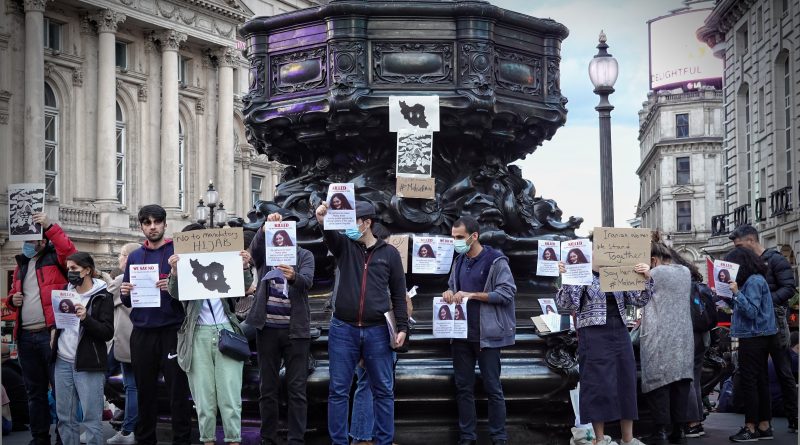Hijabs: The Fabrication of Women’s Past, Present, and Future
Eman Fatima
Staff Writer
Hijab is a sacred piece of cloth that Muslim women worldwide wear. Unfortunately, the world still feels the presence of enforcement and regulations on what a woman can wear or not. Iranian women burned Hijabs in protest after being fed up with the enforcement of these laws, according to BBC News. Some have found the burning of the Hijab controversial, but if one forces such a sacred piece of cloth to its extreme upon a human being, is it still holy and sacred? Was the brutal murder of Masha Amini’s by Iranian police over accusations of not wearing a Hijab not enough to justify the burning of the hijabs?
The phrase “the past is prologue” is unequivocally true when using the political history of Iran to understand today’s events. To some, Hijab is a symbol of expression for modesty, but to others, it is oppression. According to SBS News, the most common interpretation of the Quran tells women to wear Hijab; however, it forbids enforcing it on a woman. So, what caused Iran to be this extreme, especially when they claim it is in the name of faith? Iran Politics reports that in 1925, Reza Shah westernized the culture of Iran to the point that women could not wear the Hijab, seen astaking away the progress of society. However, the Shah underestimated the Iranian people’s dedication to their beliefs and culture.
During the Iranian Revolution, protestors wore the Hijab as a symbol of their fight and protest against the monarchy, as. it was voluntary to wear Hijab during the revolution and protests. However, this sentiment changed on March 7, 1979, when Supreme Leader Ayatollah Khomeini stated, “women who do not wear hijab are naked.” The Guardian indicates that the Hijab mandate officially became law in 1983. The consequences of not wearing the Hijab in public have been extreme since the law’s creation. Initial punishments stated that women could be whipped up to 74 lashes, later changed to imprisonment from ten days up to two to four months.
It is ironic how Iran went from one extreme to another. The situation demonstrates that when one group tries to take away another group of people’s culture, the people of that culture will go to extreme ends to restore their culture. However, that does not justify Masha Amini’s murder and certainly does not hold the exact meaning of wearing the Hijab without people’s consent. Iranian and Muslim women cannot treat it as a symbol of modesty and freedom when they have no choice.
Masih Alinejad is a journalist in Iran that has been advocating for the freedom of Iranian women for decades. She told The New York Times that “We are not fighting against a piece of cloth… We are fighting for our dignity. If you can’t choose what to put on your head, they won’t let you be in charge of what is in your head, either.” On the other hand, the Islamic Republic believes that Hijab is a sign of dignity on a woman’s head. Men like Shah deciding what is the right or wrong dress code for a woman as if women had no say in it brings back the contrasting history of the Hijab.
While Iranian women of the past wore the Hijab to protest against the monarchy, it is now the other way around -they are burning and waving the Hijab in protest of Iran’s oppressive laws. Even though many find the burning of the Hijab controversial, The Economist outlines that these women are burning the Hijab in protest of their rights. Whether it is against the ban on or the mandate law of the Hijab, Iranian women have not given up; their fight for their freedom is still going on. It is not about the Hijab anymore. It is simply about the choice to live freely and wear what they want. This is why Iranian feminists stay away from Western society’s obsession with the meaning of Hijab, as it only causes more harm than good. Though the subject of the Hijab worldwide is not considered as crucial as other political or gender equality rights, The New York Times mentions that the fight of these strong Iranian women caused one million signatures calling for the repeal of discriminatory Hijab laws. This has been one of the most momentous achievements of their rebellion.
The question is, how long is this war of women’s choice going to last? How is this going to affect the newer generation in Iran? Unfortunately, it is impossible to predict these answers. It is possible to believe that Iranian women will finally have their freedom, but at what cost?



Amazing commentary and analysis!